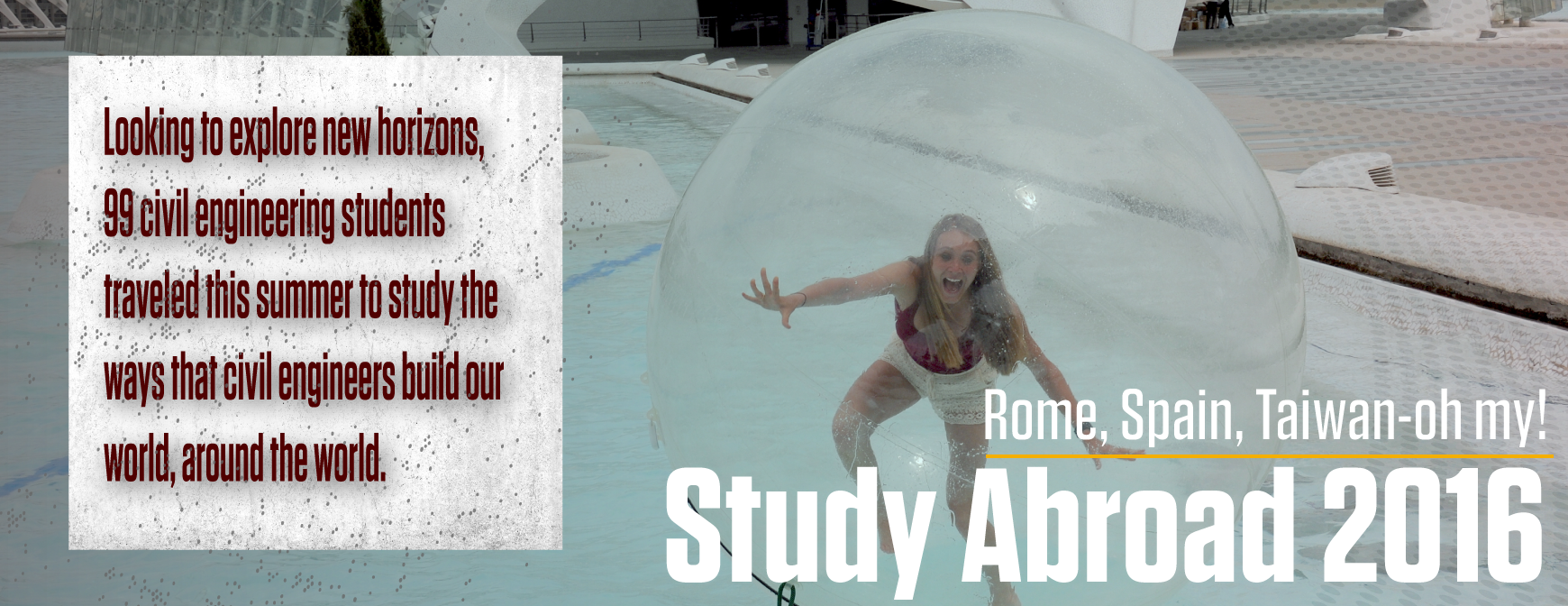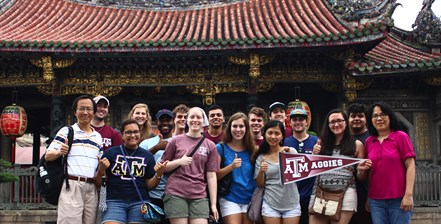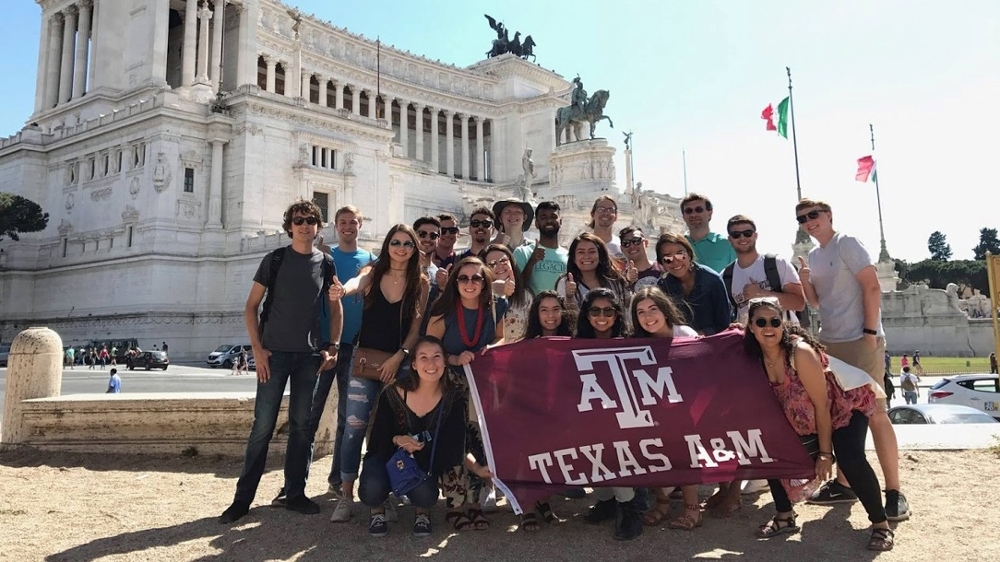
Looking to explore new horizons — literally and figuratively — 99 students from the Zachry Department of Civil Engineering at Texas A&M University traveled the world this summer to study the ways civil engineers build our world. The department led four study abroad programs in Spain, Italy and Taiwan this past summer. This marked the first civil engineering study abroad trip to Taiwan, with 14 students attending the inaugural trip, living in Taipei for five weeks.
The courses offered on the trip were taught by Texas A&M faculty at the National Taiwan University (NTU) campus located in Taipei. The trip was led by Dr. Kuang-An Chang, professor, and Dr. Kung-Hui Chu, associate professor, who taught the classes and led cultural and technical visits.

Founded in 1928, NTU is considered one of the most prestigious universities in Asia. Through NTU, the students enjoyed a world-class learning environment both in education and culture, as well as opportunities to participate in research and cultural activities.
A civil engineering related technical visit to the Yuansantze Flood Diversion Project was arranged through NTU’s alumni network. Students were impressed by this impressive feat of civil engineering, as the project diverts the Keelung River through a tunnel under a mountain and into the ocean to prevent flooding in the Keelung River Basin.
“The students saw a real structure of a flood mitigation project that diverts flow from a flood-prone river through a 40-foot diameter, 1.5-mile tunnel under a mountain to the ocean on the other side, as well as the sediment pool that minimizes sediment going through the tunnel,” said Chang. “They also saw the other side of the tunnel where the water comes out, the energy dissipation structure at the tunnel exit that minimizes erosion caused by the high-speed flow, and discussed the environmental issues caused by the high volume of fresh water abruptly entering the ocean and its impact to a local fishery.”
Beyond the structural and water resources aspects, this visit also highlighted the environmental aspects of civil engineering at the point where the river deposits into the ocean. The combination of fresh water into a salt water environment has a large impact of sea life and fishing in the area. Students saw for themselves the impacts of such a project, both beneficial — removing the threat of flooding in the area — and detrimental — adverse environmental impacts.
“It was very cool to get to apply what I’m learning toward real life, especially from an environmental aspect, getting to see how pollution affects the real world,” said Crystal Salazar, a senior civil engineering student who participated in the trip.
Studying in Taipei presents a perfect opportunity for students to explore the culture and engineering profession in Asia in a very safe and enriching environment. Beyond the classes and technical visits, the students visited the Taipei Zoo, Maokong Gondola — a gondola lift system — Taipei 101 — a supertall skyscraper — the National Museum of Marine Biology & Aquarium, Kenting National Park, the National Palace Museum and the Longshan Temple. Students also had five days for free travel around Taiwan and neighboring countries.
“Before this trip, I never considered visiting Asia, and now I want to go everywhere in Asia,” said Salazar. “I feel like it opened more doors for me culturally.”
Texas A&M is currently in the process of finalizing an exchange program with NTU, which would allow Aggie engineering students to take classes in Taiwan that count toward their degree.

This summer also marked the second year for the trip to Italy and the 11 th year to Spain. The civil engineering program hosted two trips to Italy, led by Dr. Luca Quadrifoglio, Snead Career Development Professor, and Dr. Ivan Damnjanovic, J.L. “Corky” Frank/Marathon Ashland Petroleum LLC Faculty Fellow. The first was a three-week course based in the center of Rome. The trip included cultural visits to various locations in Rome as well as to Pompeii and Florence, and a technical visit to METRO C, a civil engineering firm. The second was a five-week trip to Trieste, Italy, near Venice. Students studied at the University of Trieste, one of the top 400 Universities worldwide. On this trip, students had the opportunity to visit Venice, Vajont Dam/Dolomites, Croatia, and Slovenia. Additionally, the students visited Dizzani/De Eccher, a large international civil engineering firm.
The yearly trip to Spain is a group of 50 students, led by Dr. Joseph Bracci, professor in civil engineering, Dr. Francisco Olivera, associate professor in civil engineering, and Dr. Harry Hogan, professor in mechanical engineering. The primary location of the trip is Castilla-La Mancha, Spain, however students get to travel to Bilbao, San Sebastian and Valencia in Spain, as well as to Porto, Portugal. Students had the opportunity to take a technical visit to the construction of the bypass tunnel of the Undurraga reservoir for water supply of the city of Bilbao, and the Canal de Navarra for irrigation water supply for the Navarra region. It is a heavily immersive experience due to high levels of interaction with Spanish students at the University of Castilla-La Mancha and the opportunity to live with a local host family.
For more information about on these trips please visit our Opportunities by Location page.
Contributing author: Ryan Terry